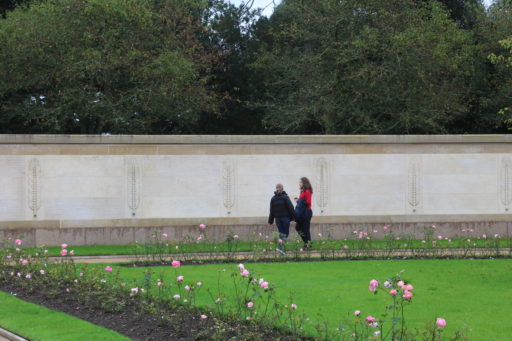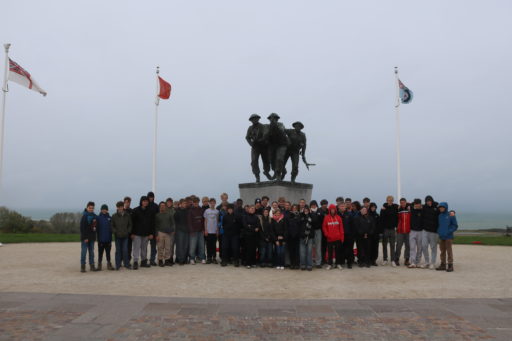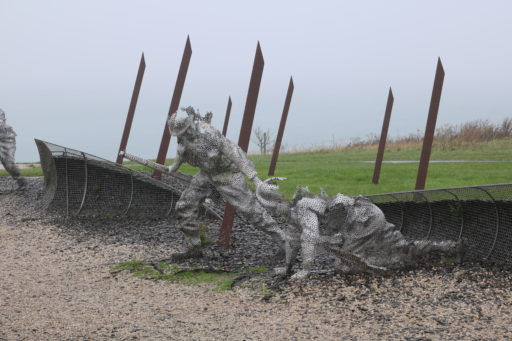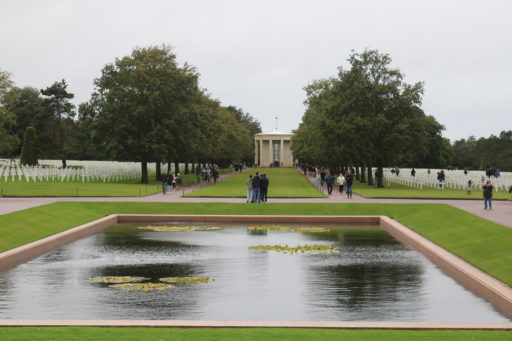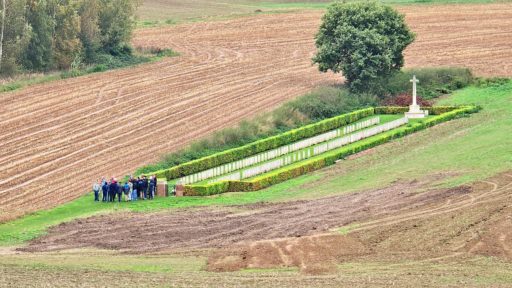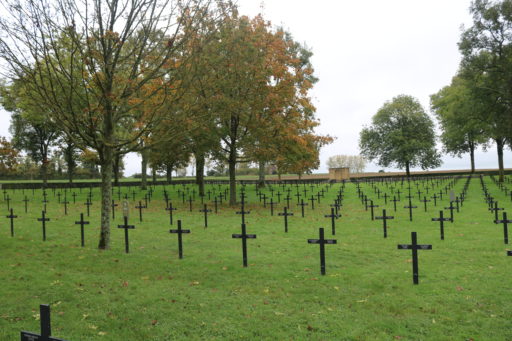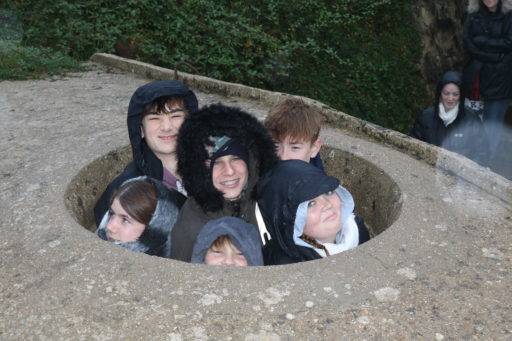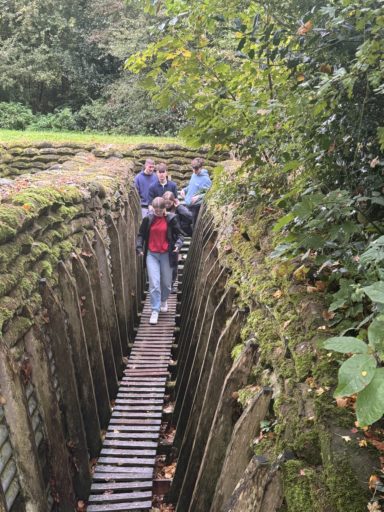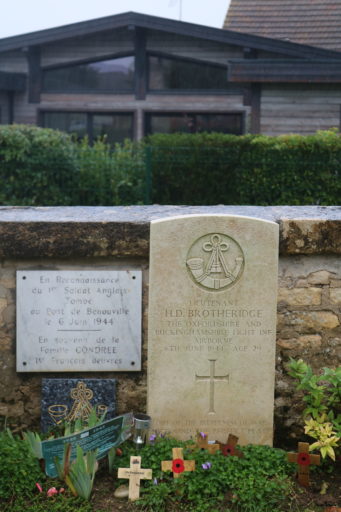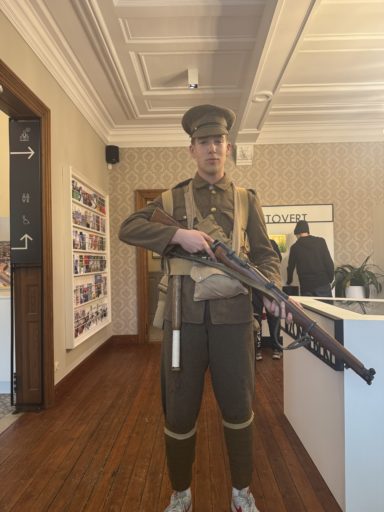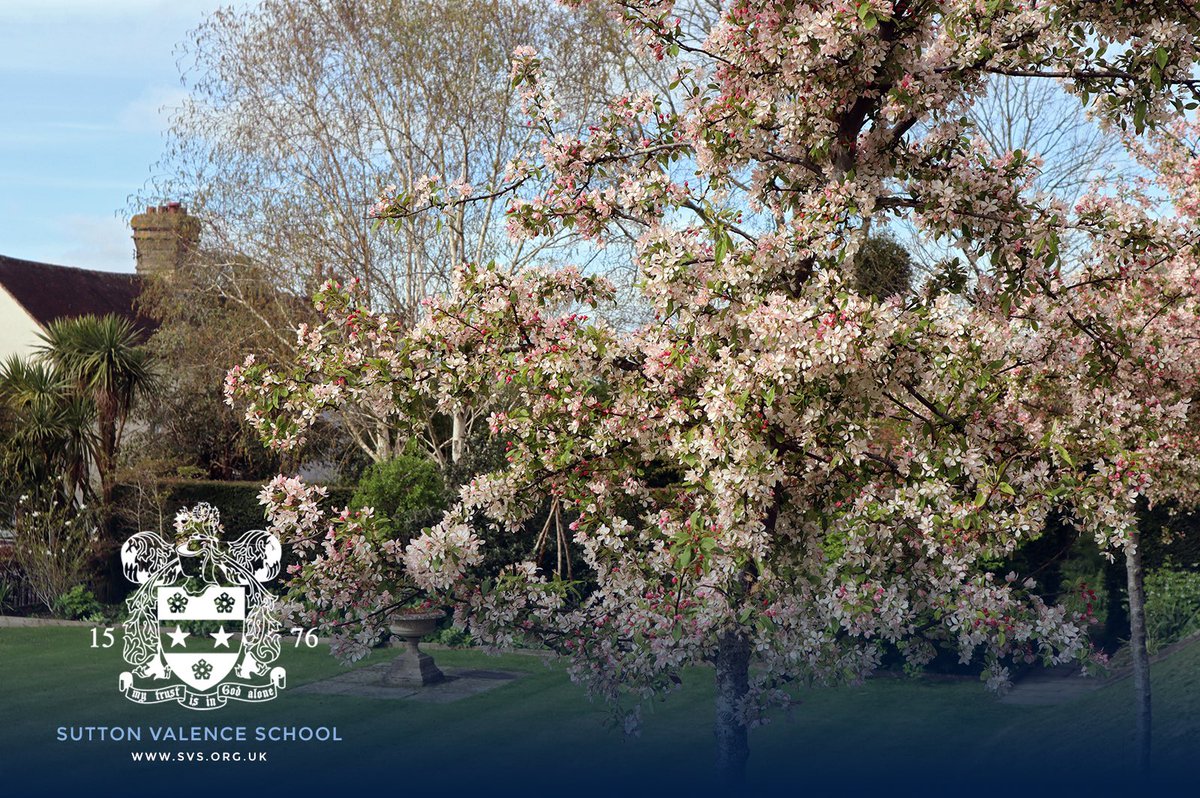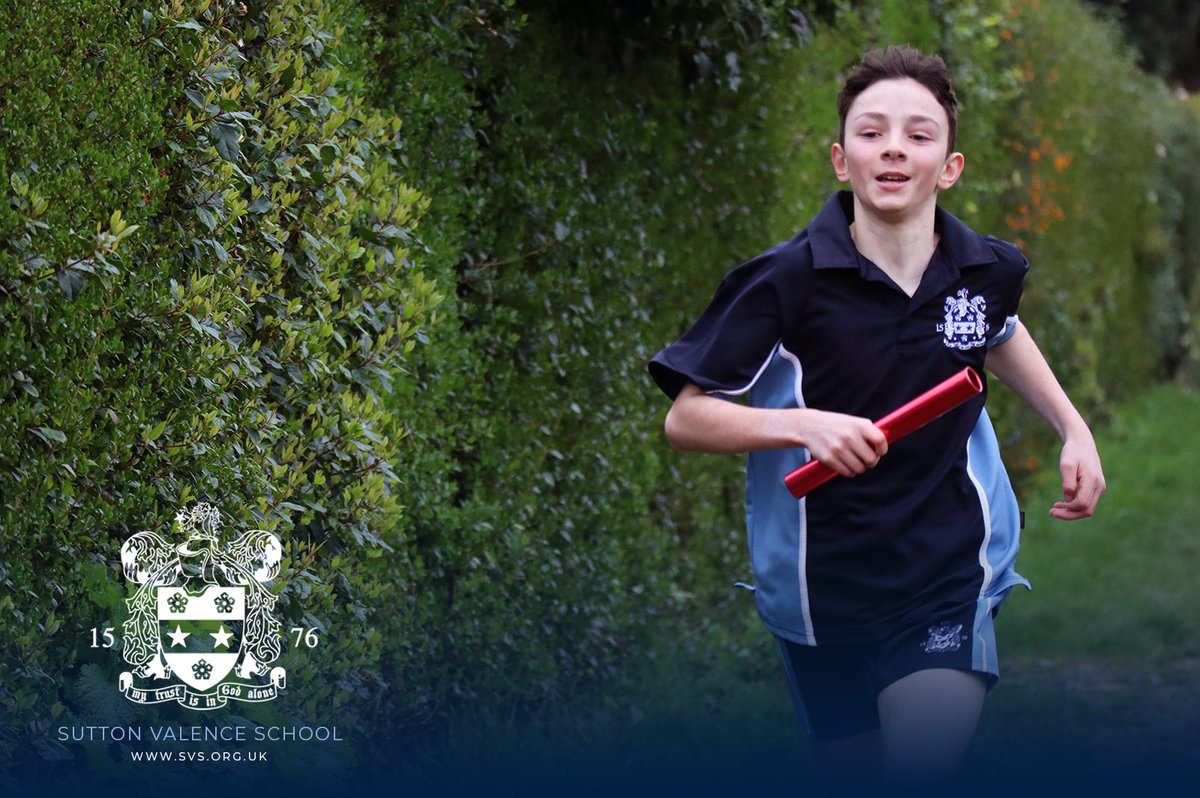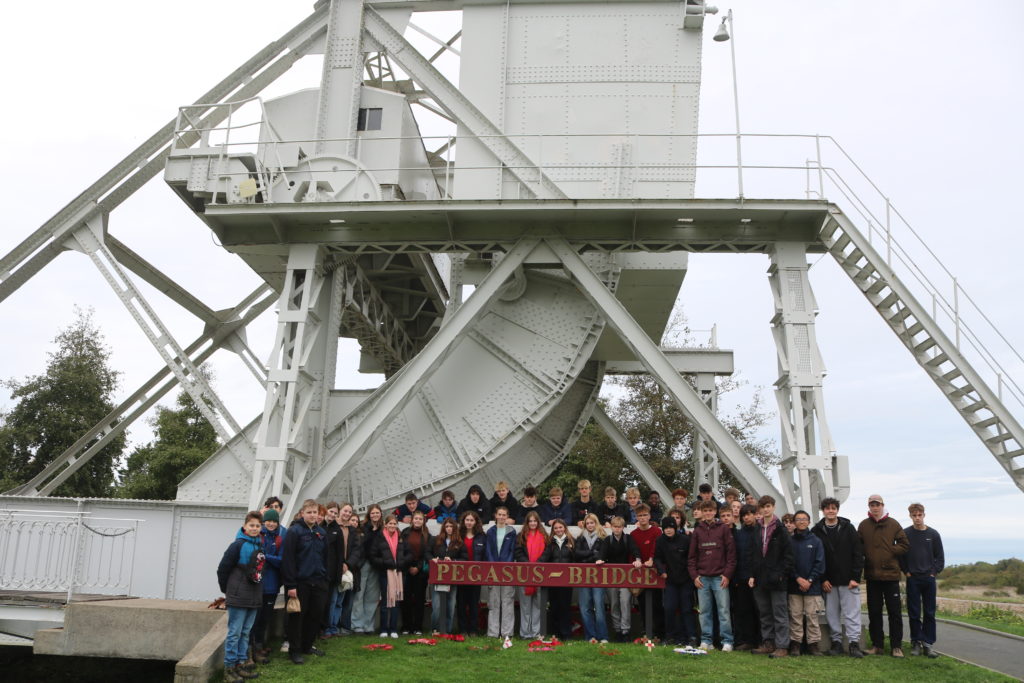
Over October half-term, our History Department embarked on an unforgettable trip, walking in the footsteps of soldiers in Flanders and Normandy. With 48 students and dedicated staff, they started at Lijssenthoek Cemetery in Ypres, guided by passionate veterans who brought real insight into the Great War. A full report of the trip can be found below from Mrs Sunde, Head of History.
Our tour was led by two outstanding guides, John and Martin, who were not only very knowledgeable and passionate about the sites and battles, but who had served as soldiers, giving them real insight into the mindset of those who had fought before them. They led discussions on the role of the empire, the significance of memorials and cemeteries and the contribution of women in the Great War. We then explored a network of recreated trenches, showing the conditions soldiers would have fought in, the development of weapons during the war and soldiers’ kit. The highlight of day one was attending the nightly ceremony at the Menin Gate, an act if remembrance that has taken place every evening since 1927.
On the second day, we walked along the sunken road and saw the images of soldiers in the exact same place over 100 years before, waiting to go over the top. Looking over the terrain, still baring the scars of the battle, we could start to understand why the Battle of the Somme resulted in 20 000 casualties on the first day alone. We finished the day with reflections on the cost of war at the Thiepval Memorial to the Missing. A long journey ensued as we moved from the battlefields of Ypres and the Somme to the landing beaches of Operation Overlord.
As we arrived in Caen, we could see allied flags and posters of the honoured in windows and in the streets. For anyone who knew the history of the D-Day landings, seeing Pegasus Bridge was a highlight. We had the opportunity to compare the British Normandy Memorial and the American memorial. At 44 acres and containing over 22, 000 names of those who fell, including several Old Suttonians, the British memorial stood proud aloft Gold Beach. However, the scale of the American memorial was staggering. At 172 acres, containing 9,389 graves and 1,557 names of the missing, it was quite a contrast to all the other memorials we had seen. We finished our day on Omaha Beach, from the cliffs we could see a stunning panoramic vista across the landing areas and could appreciate just how difficult it would have been to launch an attack on a front of this size, faced with so many obstacles and well defended machine gun posts.
It was a trip that packed in a huge amount, with a lot to take in and all the staff, including our guides, were deeply impressed by the maturity and level of interest demonstrated by all the students who attended.
